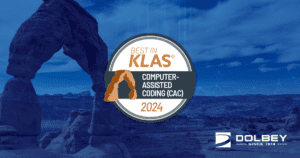Call us toll-free: 800-878-7828 — Monday - Friday — 8AM - 5PM EST
By Christel Chuderewicz, RHIT, CCS
It is time to turn our focus on October 1, 2013, for the ICD-10-CM and ICD-10-PCS implementation. This change will affect multiple aspects of hospital operations as we know them today. Kudos to those of you who have already begun gearing up for the changes, and already have committees in place.
For those of us, and I am sure there are many, who have not, there is a wealth of information available on time line implementation, including important check lists through the American Hospital Association.. To view a complete advisory from the AHA, visit the AHA’s Central Office ICD-10 Resource Centre at http://www.ahacentraloffice.org/codes/ICD10.shtml.
From a coding education perspective, the bulk of education and training on the new system should be an ongoing process.
It is certainly too soon to overwhelm the coding staff with a new system that is three years away, but after taking the ICD-10 Certified Training course myself, just a few weeks ago, I think it would certainly be appropriate to assess the educational needs your own coding staff requires to be successful.
An anatomy and physiology refresher along with an in dept review of muscles, ligaments, tendons, bones and arteries should be on the education check list along with an introduction to the new “root word” system for procedure coding.
Diagnosis coding within ICD-10 is very similar to ICD-9, just more detailed. It follows the basic general coding thought process we currently use for applying ICD-9 diagnosis codes.
It’s the procedure coding that will present our greatest educational hurdle, and challenge our most experienced coders……leaving many of them to opt for early retirement, as I am sure you have all heard……leaving the rest of us, who do not have that luxury, feeling overwhelmed and anxious.
To lessen the anxiety and prevent backlogs, we need to:
- Work with our educators to ensure that all graduates are prepared for the changes.
- Promote our profession….the well is drying up and qualified coders are a dying breed.
- Mentor and provide ongoing education for our current staff.
- Turn to technology…..it IS our friend!
Although reluctantly, 20 years ago we embraced the encoder as a tool to assist the coding staff. Now, we find it difficult to function without it. We must now view the computer assisted coding software in the same manner……a tool which enhances the coder’s ability to perform their job more effectively.
If you have not already had a chance to review any of the Computer-Assisted Coding software applications available, now is the time, as it can prove to be an excellent tool to assist the coding staff with the transition as well as avoiding expected back logs.
Additionally, there are many recommendations to enhance clinical documentation improvement specialist programs to handle documentation deficiency needs. A CAC program along with your electronic medical record could help defray those costs by providing immediate information on areas of documentation improvement without adding additional FTEs.
My organization, as well as many others in Western Pennsylvania have already implemented, or are in the process of implementing CAC software to enhance the coder’s ability to perform daily duties. All of who, I am sure would be willing to share their experience. Don’t wait for tomorrow…………check it out today!
In listening to a webinar last week hosted by our friends to the north on their experience going live with ICD-10, if there was one thing Canada could advise, it is “PREPARE, PREPARE, PREPARE”.


